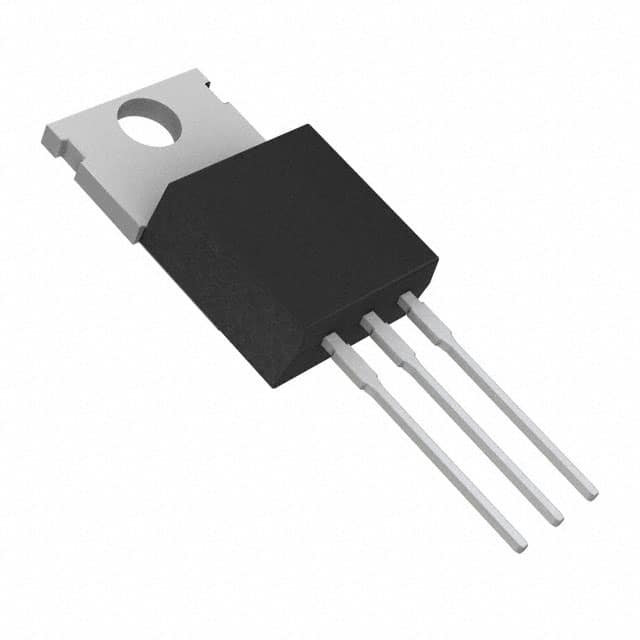Viz Specifikace pro podrobnosti o produktu.

D45H8 Transistor: Encyclopedia Entry
Introduction
The D45H8 transistor is a crucial component in electronic devices, offering unique characteristics and applications. This encyclopedia entry provides an in-depth overview of the D45H8 transistor, including its product details, specifications, pin configuration, functional features, advantages, disadvantages, working principles, application field plans, and alternative models.
Product Overview
Category
The D45H8 transistor falls under the category of power transistors.
Use
It is commonly used in power amplification and switching applications.
Characteristics
- High voltage capability
- High current capability
- Low saturation voltage
Package
The D45H8 transistor is typically available in a TO-220 package.
Essence
The essence of the D45H8 transistor lies in its ability to handle high power and voltage levels efficiently.
Packaging/Quantity
It is usually packaged individually and sold in quantities suitable for various project requirements.
Specifications
- Collector-Emitter Voltage (VCEO): 80V
- Collector-Base Voltage (VCBO): 100V
- Emitter-Base Voltage (VEBO): 5V
- Collector Current (IC): 10A
- Total Power Dissipation (PT): 40W
Detailed Pin Configuration
The D45H8 transistor has a standard pin configuration with the following layout: 1. Base (B) 2. Collector (C) 3. Emitter (E)
Functional Features
- High voltage and current handling capabilities
- Low saturation voltage for efficient switching
- Robust construction for reliable performance
Advantages
- Suitable for high-power applications
- Low saturation voltage reduces power loss
- Reliable and durable construction
Disadvantages
- May require heat sinking in high-power applications
- Limited frequency response compared to small-signal transistors
Working Principles
The D45H8 transistor operates based on the principles of bipolar junction transistors, utilizing the control of current flow for amplification and switching functions.
Detailed Application Field Plans
Power Amplification
The D45H8 transistor is widely used in audio amplifiers, power supplies, and other systems requiring high-power amplification.
Switching Applications
It is employed in various switching circuits such as motor control, lighting control, and power management systems.
Voltage Regulation
In voltage regulator circuits, the D45H8 transistor helps in maintaining stable output voltages.
Detailed and Complete Alternative Models
- D44H8
- D45H11
- MJL21193
- MJL21194
In conclusion, the D45H8 transistor offers exceptional capabilities in power amplification and switching applications, making it a valuable component in electronic designs. Its high voltage and current handling, low saturation voltage, and robust construction contribute to its widespread use across diverse industries. Understanding its specifications, pin configuration, functional features, advantages, disadvantages, working principles, application field plans, and alternative models is essential for effectively integrating the D45H8 transistor into electronic systems.
Word count: 414
Seznam 10 běžných otázek a odpovědí souvisejících s aplikací D45H8 v technických řešeních
What is D45H8?
- D45H8 is a commonly used NPN bipolar junction transistor (BJT) with high voltage and current capabilities, often employed in power switching applications.
What are the typical applications of D45H8?
- D45H8 is frequently used in power supply circuits, motor control, audio amplifiers, and other high-power switching applications.
What are the key electrical characteristics of D45H8?
- The D45H8 transistor typically has a collector-emitter voltage (Vce) of 80V, a collector current (Ic) of 10A, and a DC current gain (hfe) of 40 to 320.
How do I properly bias D45H8 in a circuit?
- Proper biasing of D45H8 involves setting the base current to ensure the transistor operates within its specified parameters, typically using a suitable base resistor.
Can D45H8 be used in high-frequency applications?
- While D45H8 can function at moderate frequencies, it is not optimized for high-frequency applications due to its inherent capacitance and transition frequency limitations.
What are the thermal considerations when using D45H8 in a design?
- It's important to consider heat dissipation and thermal management, as D45H8 can generate significant heat under high-current conditions, necessitating proper heatsinking.
Are there any common failure modes associated with D45H8?
- Common failure modes include thermal runaway under high load conditions, as well as potential damage from voltage spikes or improper handling during installation.
Can D45H8 be used in automotive applications?
- Yes, D45H8 can be utilized in automotive systems such as electronic ignition, power window controls, and other high-power applications within vehicles.
What are some alternative transistors to D45H8 for similar applications?
- Alternatives to D45H8 include transistors like TIP122, TIP127, and MJE2955, which offer comparable voltage and current ratings.
Where can I find detailed datasheets and application notes for D45H8?
- Detailed datasheets and application notes for D45H8 can typically be found on semiconductor manufacturer websites or distributor platforms, providing comprehensive information for design and implementation.

